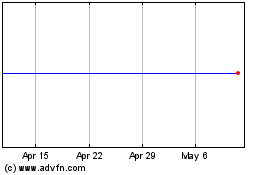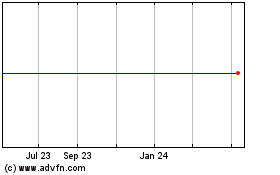Transocean: Blame it on BP! - Analyst Blog
June 23 2011 - 10:30AM
Zacks
In an internal investigation
report, drilling contractor Transocean Ltd
(RIG) – the owner and operator of
Deepwater Horizon oil rig at the heart of the Gulf of Mexico (GoM)
disaster – has accused British energy giant BP plc
(BP) of decisions that led to the biggest
environmental disaster in U.S. history.
As a reminder, on April 20, 2010,
offshore driller Transocean’s ultra-deepwater Horizon drilling
platform, contracted to BP, sank following an explosion while
operating in the U.S. Gulf of Mexico off the coast of
Louisiana.
The incident killed 11 workers and
spewed more than 200 million gallons of crude in what is touted as
the worst oil spill in U.S. history. Subsequently, a moratorium was
imposed on offshore drilling at water depths of more than 500 feet
in the region, which was lifted on October 12, 2010.
The report issued by Transocean
alleges that BP – the owner of the Macondo well with a 65% interest
– was squarely to blame for the oil spill, as the root causes of
the explosion were tied to the London-based group’s ‘poor’ design
of the well. BP overlooked risks associated with the troubled
Macondo well and did not communicate the danger, alleges
Transocean.
The offshore driller’s findings
added that BP’s technically complex and poorly designed ‘production
casings’ left little margin for error, while the cement used to
create the structure was not adequately tested at all.
Transocean’s report goes on to say
that BP, together with Halliburton Co.
(HAL), another contractor, was to be
blamed for the ‘poor cement job’ that allowed the oil/gas to burst
through the reservoir and reach the rig, causing the explosion.
In a similar report commissioned by
BP in September, the company blamed the disaster on a series of
lapses by multiple parties, specifically hitting out at Transocean,
accusing that every bit of safety system/device and well control
procedure on the rig failed, and has therefore asked for $40
billion in damages.
Separately, BP also accused
Cameron International Corp. (CAM)
– the maker of a critical safety device called ‘blowout preventer’
– of designing and building a faulty piece of equipment and
negligently maintaining it, which then failed to properly operate
when required.
Now, with Transocean seeking to
shift the accusation back to its employer, the legal battle over
who is to blame for the accident gets more intense. According to
reports, a federal trial is scheduled for next year to assess the
degree of fault and the quantum of liability that lies with the
companies.
BP PLC (BP): Free Stock Analysis Report
CAMERON INTL (CAM): Free Stock Analysis Report
HALLIBURTON CO (HAL): Free Stock Analysis Report
TRANSOCEAN LTD (RIG): Free Stock Analysis Report
Zacks Investment Research
Cooper Cameron (NYSE:CAM)
Historical Stock Chart
From May 2024 to Jun 2024

Cooper Cameron (NYSE:CAM)
Historical Stock Chart
From Jun 2023 to Jun 2024
